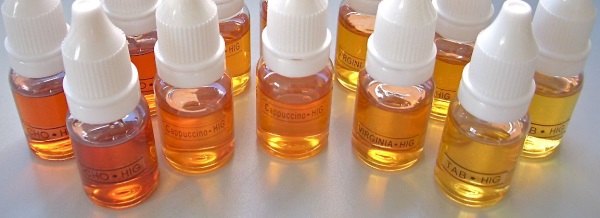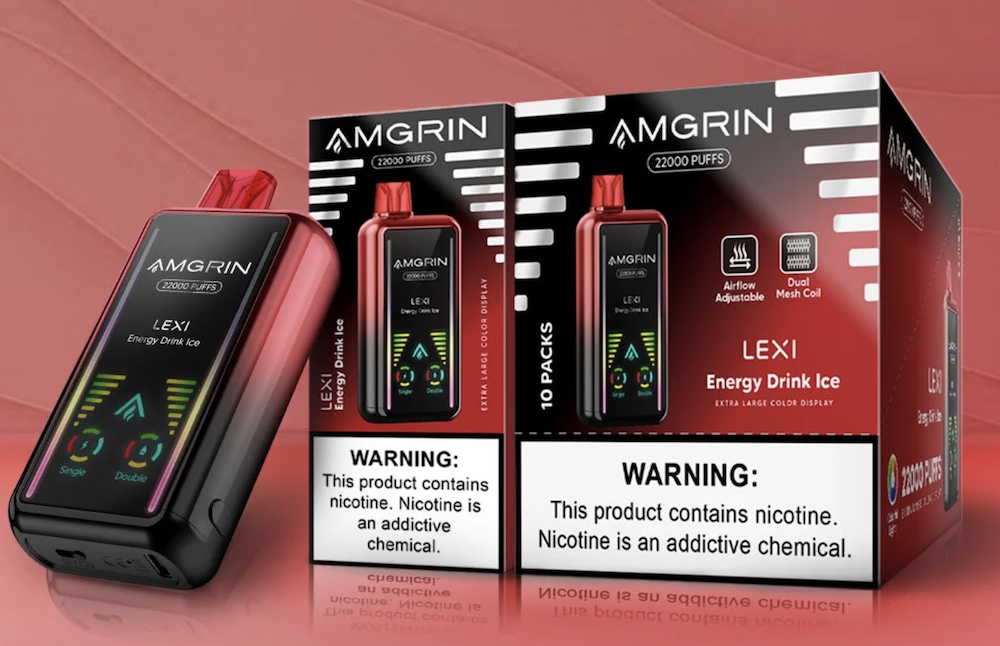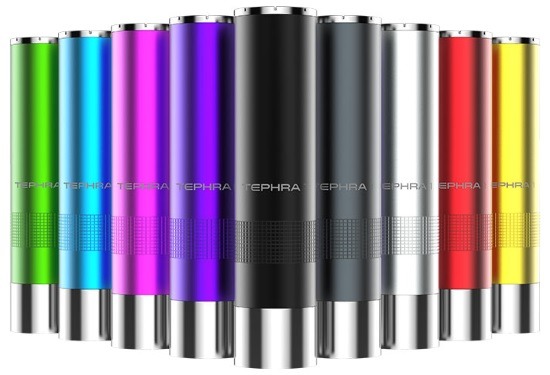Without question, vape juice is the single most important aspect of your vaping experience. You’ll be buying it regularly as long as you vape, and there are a lot of different choices out there — the one that you buy had better be the right one for your needs.
Two substances — propylene glycol (PG) and vegetable glycerin (VG) — make up the vast majority of what you’ll find in a bottle of e-liquid. They provide the e-liquid’s substance, creating the clouds that you inhale and exhale when you vape. They also dilute the e-liquid’s other ingredients, which is necessary because flavoring compounds and commercial-grade nicotine are very powerful in their original forms.
Most of the e-liquids on the market contain both PG and VG because both substances have their own sets of characteristics and benefits. The ratio is often stated on the bottle as the “VG/PG ratio” or “PG/VG ratio” depending on the manufacturer’s preferences. What are the differences between PG and VG, though, and why should you choose an e-liquid with a particular ratio? Those are the things you’ll learn as you read this guide.
Revolutionary New Disposable Vape
The new Lost Mary MT15000 lasts up to 15,000 puffs and features the incredible new Pulse Mode that allows you to get double the vapor on demand. A front display shows the device's e-liquid supply and battery life at a glance. Try the Lost Mary MT15000 Sample Pack, which includes three different flavors, for just $39.99. Take an additional 20% off with the coupon code VAPEGRL.

Propylene Glycol (PG): The Flavor Enhancer
Propylene Glycol is a petroleum by-product and is known for being a thin, odorless liquid that possesses a slightly sweet taste. Its most distinguishing feature in the vaping world is its ability to carry flavors more effectively than VG. Due to its low viscosity, PG provides a stronger throat hit, reminiscent of the sensation one gets from smoking traditional cigarettes. This makes it a favorite among former smokers or individuals seeking a more intense experience.
PG’s thin consistency also means it is less likely to build up on the heating elements of your vape device, leading to a cleaner vaping experience with less maintenance required. However, it’s worth noting that some individuals may be sensitive or allergic to PG, experiencing irritation in the throat or dryness. In such cases, a VG-based or higher VG blend e-liquid might be preferable.
What Are Some Common Products That Include PG?
- Food Products: Used as a food additive, PG serves as a humectant (moisture-preserver), solvent, and preservative in various processed foods like salad dressings, soft drinks, and baked goods.
- Cosmetics and Personal Care Products: PG is a common ingredient in products like shampoo, conditioner, lotions, hand sanitizers, and deodorants for its moisture-retaining and solvent properties.
- Pharmaceuticals: Found in oral, injectable, and topical medications, PG acts as a solvent or carrier for active ingredients.
What’s It Like to Use a High-PG Vape Juice?
- Stronger Throat Hit: High PG e-liquids provide a more pronounced throat hit, mimicking the sensation of smoking tobacco. This is often appreciated by former smokers or those who enjoy the physical sensation of inhaling.
- Enhanced Flavor: PG is a better carrier of flavors than VG, making the taste more vivid and distinct. This results in a richer and more intense flavor experience.
- Less Vapor Production: E-liquids with a higher PG ratio produce less vapor on exhalation compared to their VG-heavy counterparts. This can be preferable for those who value discretion in their vaping.
- Thinner Liquid: PG is less viscous than VG, which means it is less likely to clog or damage vaping equipment. It also wicks more easily in smaller, older, or less powerful vaping devices.
However, due to PG’s potential to cause irritation in some users, those with sensitivities or allergies may experience discomfort, such as throat irritation or dryness.
What Are Some Signs of a PG Allergy or Sensitivity?
If you vape and suspect you might be allergic or sensitive to Propylene Glycol (PG), it’s important to recognize the symptoms that can manifest. PG sensitivity or allergy can range from mild to severe reactions, and not everyone will experience the same symptoms. Here are some common signs that may indicate a sensitivity or allergic reaction to PG in vape juice:
- Throat Irritation: One of the most common signs is a persistent sore throat or an uncomfortable sensation in the throat after vaping products containing PG.
- Skin Reactions: You might experience dermatological reactions such as rash, hives, or itching. These can occur on various parts of the body and not necessarily at the point of contact.
- Dry Mouth and Throat: While vaping can generally cause dry mouth and throat, a reaction to PG can exacerbate these symptoms, making them more pronounced and uncomfortable.
- Nausea: In some cases, sensitivity to PG can lead to feelings of nausea or general unease, especially soon after vaping.
- Headaches: Some individuals report headaches as a symptom of PG sensitivity. These can vary in intensity and frequency.
- Sinus Problems: Issues like congestion, sinus pain, or a runny nose can also be indicative of a sensitivity to PG, especially if these symptoms consistently appear after vaping.
- Breathing Difficulties: Although less common, some individuals might experience wheezing, shortness of breath, or other respiratory issues as a result of a PG sensitivity or allergy.
- Swelling: In rare cases, swelling of the face, lips, tongue, or throat can occur, which may be a sign of a more severe allergic reaction and requires immediate medical attention.
If you experience any of these symptoms consistently after vaping, it may be wise to consider switching to a higher VG content e-liquid or a VG-only formulation. Additionally, consulting with a healthcare professional can provide guidance and help you determine if PG is the cause of your symptoms. It’s crucial to listen to your body and adjust your vaping choices accordingly to ensure a safe and enjoyable experience.
Vegetable Glycerin (VG): The Cloud Producer
Vegetable Glycerin is a natural chemical, derived from vegetable oil, and is recognized for being significantly thicker than PG. VG is acclaimed for its ability to produce dense vapor clouds, making it the go-to choice for cloud chasers and those who prioritize vapor production over throat hit. Its thick consistency contributes to a smoother throat hit, which can be gentler on the respiratory system.
Furthermore, VG has a slightly sweet taste, which can subtly affect the flavor profile of vape juice. The enhanced sweetness is an advantage for some flavors but can be a drawback for others, potentially muting complex flavor notes. The viscosity of VG also means it’s more demanding on vape hardware, sometimes requiring more frequent cleaning and maintenance to prevent clogging.
What Are Some Common Products That Include VG?
- Food Products: VG is used as a sweetener, preservative, and thickener in foods like candy, baked goods, and dairy products (such as yogurt and cream).
- Cosmetics and Personal Care Products: Owing to its moisturizing properties, VG is a key ingredient in soaps, toothpaste, lotions, and creams.
- Pharmaceuticals: Used in cough syrups, elixirs, and expectorants due to its soothing properties and ability to retain moisture.
- Herbal and Plant Extracts: VG is utilized as a solvent in herbal extracts and tinctures, as it can effectively extract plant constituents and preserve their qualities.
What’s It Like to Use a High-VG Vape Juice?
- Dense Vapor Production: High VG e-liquids are renowned for producing thick, substantial vapor clouds, making them a favorite among cloud chasers and those who enjoy the visual aspect of vaping.
- Smoother Throat Hit: VG leads to a much smoother sensation on the throat, which can reduce coughing or irritation during inhalation. This is ideal for those seeking a gentler vaping experience.
- Sweeter Taste: VG has a sweet taste, which can subtly affect the flavor profile of the e-liquid, sometimes enhancing or muting certain flavors.
- Thicker Liquid: The viscosity of VG means it’s more prone to build-up and may require more frequent cleaning of vaping equipment. It also demands more powerful devices or those with better wicking capabilities to handle the thicker liquid efficiently.
High VG e-liquids are best suited for individuals looking for massive vapor production and a less intense throat hit, but might not be ideal for those using lower-powered vaping devices due to its thick consistency.
PG/VG Ratio: Finding Your Perfect Balance
Most e-liquids on the market use a blend of PG and VG, and the ratio can significantly affect your vaping experience. High PG blends (such as 70/30 PG/VG) are favored for their strong flavor delivery and satisfying throat hit. On the other hand, high VG blends (such as 70/30 VG/PG) are preferred for producing large clouds of vapor and offering a smoother inhale.
Ultimately, the choice between PG and VG depends on personal preference and what you value most in your vaping experience. Whether you prioritize flavor intensity, throat hit, or vapor production, there’s a PG/VG blend that’s right for you.
Final Thoughts
Understanding the differences between Propylene Glycol and Vegetable Glycerin is crucial for any vaper, whether you’re a seasoned enthusiast or new to the scene. By recognizing the unique properties of each component, you can tailor your vaping experience to your preferences, ensuring maximum enjoyment and satisfaction. Remember, the best way to find your ideal PG/VG ratio is through experimentation, so don’t hesitate to explore different blends until you discover the perfect match for your vaping style.
 Propylene glycol and vegetable glycerin are both humectants, which means they absorb water. For this reason, it’s wise to stay hydrated while using your e-cigarette.
Propylene glycol and vegetable glycerin are both humectants, which means they absorb water. For this reason, it’s wise to stay hydrated while using your e-cigarette.






Great information.